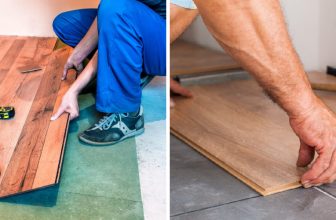How to Match Flooring in Different Rooms
Do you ever struggle to figure out how to match the flooring in different rooms of your home? Are you looking for a cohesive, stylish look that won’t break the bank? If so, this blog post is perfect for you! Here, we’ll walk through some simple tips and tricks on how to pick flooring that complements each room in your house while also staying within your budget.
We’ll discuss everything from matching colors and patterns to finding the right texture and material depending on climate conditions. So get ready – let’s explore the exciting world of interior design together!
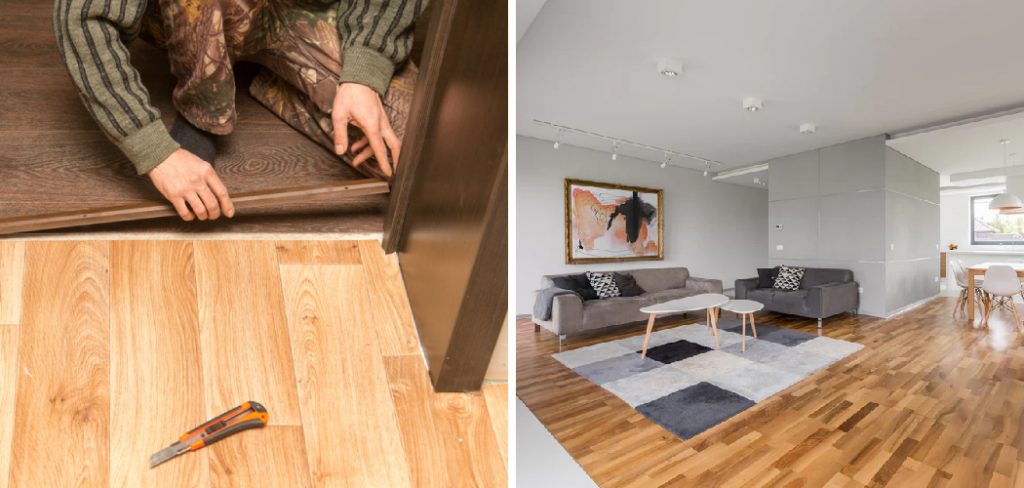
Matching the flooring between two rooms can present a challenge, but it does not have to be impossible. With just a few tips and tricks up your sleeve, matching flooring in different spaces of your house is achievable – allowing you to craft an interior look that is both inviting and beautiful. Read on for our top advice on how to match flooring in different rooms.
Why May You Want to Match Flooring in Different Rooms?
1 . To Create a Cohesive Look
Matching flooring in different rooms is a great way to create a cohesive look throughout your home. By using the same type of flooring, whether it’s hardwood, tile, or carpeting, you can tie all the rooms together and make them feel like one cohesive space.
2 . To Make Your Space Appear Larger
Another benefit of matching flooring in different rooms is that it can make your space appear larger. By eliminating the visual breaks between rooms, the flooring can flow seamlessly from one room to another, creating the illusion of a larger space.
3 . To Simplify the Design Process
Choosing different types of flooring for each room can be overwhelming and complicated. By matching flooring throughout your home, you simplify the design process and make it easier to create a cohesive and aesthetically pleasing space.
4 . To Increase the Resale Value of Your Home
Having matching flooring in different rooms can also increase the resale value of your home. Potential buyers will appreciate the cohesiveness and flow of the space, making it more attractive and desirable.
15 Ideas on How to Match Flooring in Different Rooms
1 . Match the Flooring With the Style of Your Home
When it comes to choosing flooring for different rooms in your house, one of the most important factors is to match the style of your home. If you have a traditional or rustic style, hardwood floors may be a great option, while modern and contemporary homes can benefit from sleek and polished tile or laminate.
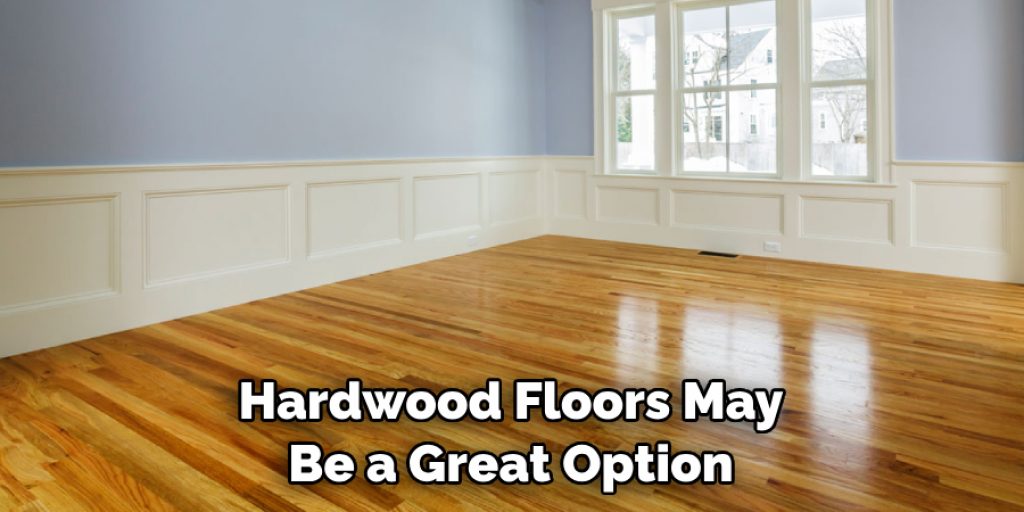
2 . Consider the Function of the Room
Another key consideration when choosing flooring for different rooms is the function of each space. High-traffic areas like entryways and kitchens may benefit from durable materials like stone or vinyl, while bedrooms and living rooms can have softer options such as carpet or hardwood.
3 . Go for a Unified Look
One way to create a cohesive look throughout your home is by choosing the same type of flooring for all rooms. This can help create a seamless flow and make your space feel more spacious and put-together.
4 . Mix and Match Materials
On the other hand, mixing and matching different flooring materials can add visual interest and personality to each room. For example, combining hardwood in living areas with tile or vinyl in bathrooms can create a unique and stylish look.
5 . Consider the Color Palette
When selecting flooring for different rooms, consider the color palette of your home. Neutral tones like beige, grey, or white can work well in any space and can easily be complemented by rugs or furniture. Bold colors or patterns may be better suited for accent areas rather than entire rooms.
6 . Think About Maintenance
Different types of flooring require different levels of maintenance, so consider how much time and effort you are willing to put into cleaning and upkeep. Hardwood floors may need regular polishing, while carpeted areas may require more frequent vacuuming.
7 . Keep an Eye on Durability
While aesthetics are important, durability should also be a factor when choosing flooring for different rooms. For high-traffic areas or homes with pets and children, opt for materials that can withstand wear and tear, such as laminate or vinyl.
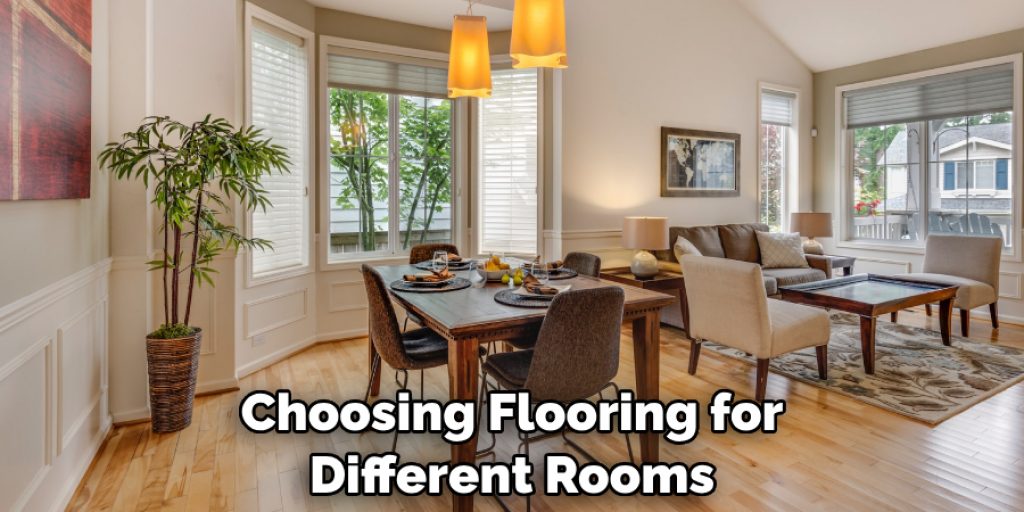
8 . Consider the Climate
The climate of your region can also play a role in your flooring choices. In colder climates, consider options like carpet or hardwood to keep your feet warm, while in warmer climates, tile or stone can help keep your home cool.
9 . Think About Noise Levels
Some flooring options can be noisy underfoot, which may not be ideal for bedrooms or quiet areas. Consider materials like cork or carpet for these spaces to reduce noise levels and create a more peaceful atmosphere.
10 . Pay Attention to Lighting
Different types of flooring can react to lighting in different ways, which can affect the overall look and feel of a room. For example, shiny or glossy surfaces may reflect light and make a space appear larger, while matte surfaces can absorb light and create a cozier atmosphere.
11 . Use Area Rugs to Tie Spaces Together
If you have different flooring materials in adjacent rooms, using area rugs can help tie the spaces together and create a cohesive feel. Choose rugs that complement each other in color and style to create a harmonious flow.
12 . Consider Your Budget
Flooring can be a significant investment, so it’s important to consider your budget when choosing materials for different rooms. While hardwood may be more expensive upfront, it can add value to your home and last for decades. On the other hand, vinyl or laminate can be more budget-friendly options.
13 . Take Inspiration from Nature
Nature can provide great inspiration when it comes to choosing flooring for different rooms. For example, stone floors in bathroom can create a spa-like feel, while bamboo flooring in a living room can add an earthy and sustainable touch.
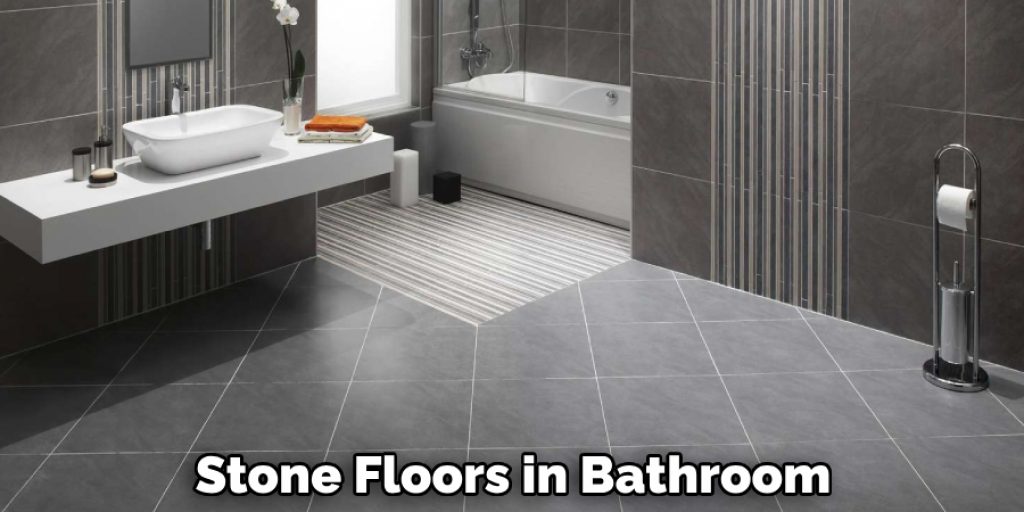
14 . Don’t Be Afraid to Get Creative
When it comes to flooring, there are endless possibilities to get creative. Consider using different patterns or layouts for tiles or mixing and matching different materials for a unique look that reflects your personal style.
15 . Trust Your Instincts
Ultimately, the best way to match flooring in different rooms is to trust your instincts and go for what feels right for your home. Remember, there are no set rules when it comes to design, so have fun and choose the flooring that makes you happy and comfortable in your space. So go ahead, explore different options and create a home that reflects your unique personality through its flooring choices!
Frequently Asked Questions
What Precautions Should I Take While Matching Flooring in Different Rooms?
Here are several precautions you should take while matching flooring in different rooms: When choosing flooring for different rooms, consider the overall ambiance and style of your home. You want to make sure that the flooring complements the existing decor and doesn’t clash with it.
Additionally, take into account the functionality and durability of the flooring for each specific room. For example, waterproof or stain-resistant flooring may be more suitable for high-traffic areas such as kitchens and bathrooms.
How Do I Choose Flooring That Will Flow Well Throughout My Home?
When choosing flooring that will flow well throughout your home, consider using a consistent color palette or material. This will create a sense of continuity and cohesiveness throughout your home. You can also opt for using different types of flooring but in coordinating colors or patterns to create a harmonious flow between rooms.

Can I Mix and Match Different Types of Flooring in My Home?
Yes, you can mix and match different types of flooring in your home as long as it is done intentionally and tastefully. For example, you can use hardwood in the main living areas and tile in the kitchen and bathrooms for a seamless transition between rooms. Just make sure to consider the overall aesthetic and functionality of each type of flooring before making your final decision.
What Are Some Popular Flooring Trends for Matching Different Rooms?
Some popular flooring trends for matching different rooms include using wide plank hardwood for a modern and luxurious look, incorporating bold patterns and colors in tile flooring for a statement piece, and using engineered hardwood or luxury vinyl planks for a more durable and budget-friendly option. Ultimately, the best flooring trend is one that suits your personal style and complements the overall design of your home.
How Can I Ensure That My Flooring Matches In Different Rooms?
To ensure that your flooring matches in different rooms, it is important to plan and coordinate ahead of time. Start by choosing a color palette or material that will be consistent throughout the entire home. Then, consider using samples of the flooring options in each room to see how they look together before making a final decision.
Consulting with a professional designer or taking advantage of virtual design tools can also help ensure a cohesive and well-matched flooring in your home. Remember to also consider the lighting in each room, as it can greatly impact the appearance of your flooring. Be patient and take your time when making decisions to ensure that you achieve a complementary and harmonious look throughout your home.
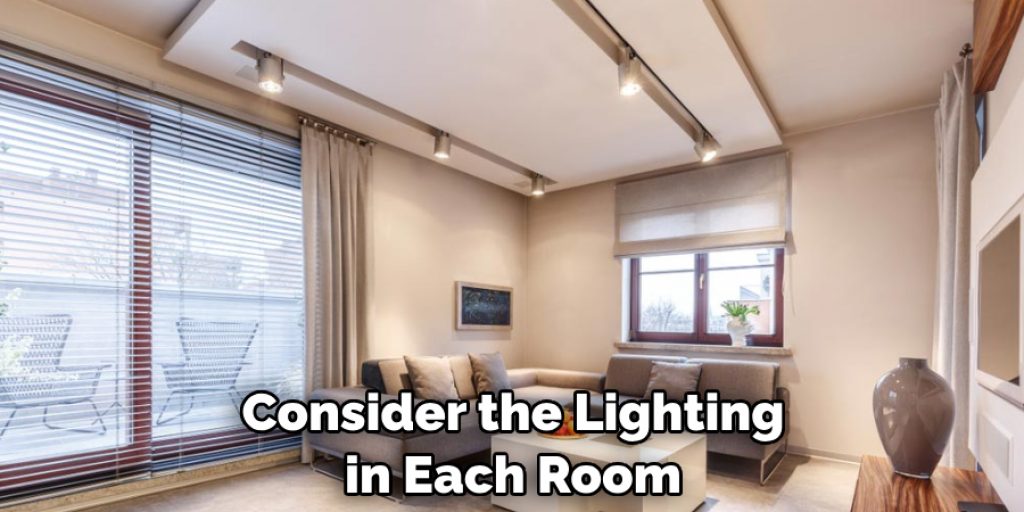
Overall, matching flooring in different rooms requires careful consideration and planning, but with the right approach, you can create a beautiful and cohesive look throughout your home.
Can I Change the Flooring in One Room without Affecting the Rest of My Home?
Yes, you can change the flooring in one room without affecting the rest of your home. However, it is important to consider how the new flooring will flow with the existing flooring in adjacent rooms. If there is a stark contrast between the two, it may disrupt the overall aesthetic and flow of your home.
To avoid this, try to use similar colors or materials in the new flooring to create a cohesive look throughout your home. It is also recommended to consult with a professional for design advice before making any major changes to your flooring. Remember, small changes can make a big impact, so choose your flooring carefully to maintain harmony in your home’s overall design.
How Much Should I Budget for Matching Flooring in Different Rooms?
The cost of matching flooring in different rooms will depend on several factors such as the type of material, installation costs, and any additional expenses such as removal of old flooring. It is important to have a budget in mind before starting your project to ensure that you can afford the materials and finishes you desire.
Consider consulting with a professional to get a better understanding of the costs and options available for matching flooring in different rooms. This will help you plan accordingly and avoid any unexpected expenses along the way. Remember, investing in quality flooring can add value to your home and enhance its overall aesthetic, so it is worth considering all factors when budgeting for your project.

Conclusion
To sum it up, choosing the right flooring for your home is worth your time and effort. Your choice can bring a harmonious look or a unique character to different rooms in the house. Flooring texture, colour, pattern and material should be carefully considered when choosing flooring. A variety of options are out there to choose from so don’t hesitate to experiment with ideas.
Now you know how to match flooring in different rooms! It’s best to take measurements before making decisions on which kind of flooring you want to install. Lastly, if you ever find yourself lost don’t worry, some contractors can provide professional advice and put everything together for you. So start exploring this exciting world of flooring and see what works best for your home!



